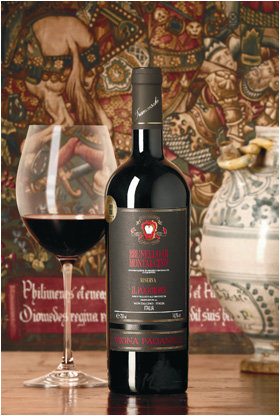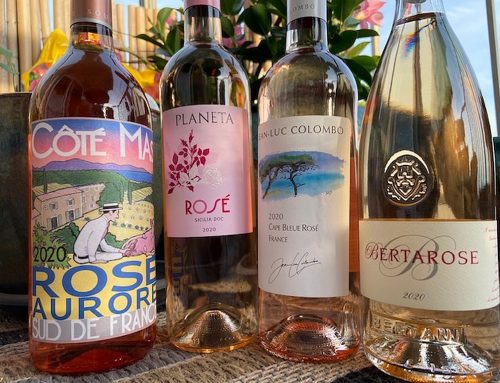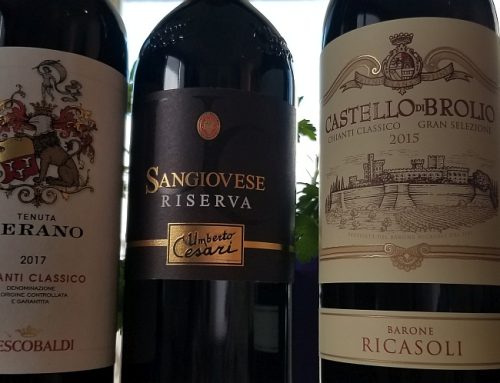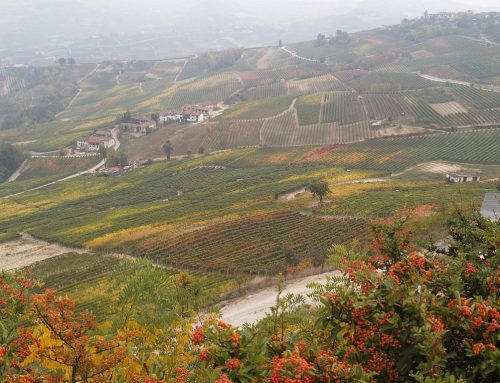Brunello di Montalcino has gone through a sea change since the 1970s, but one of the anchors of this area and its wine is Il Poggione.
In the late 1800s, Florentine landowner Lavinio Franceschi trekked from his estate to the distant hills of the Montalcino area south of Siena. He wanted to see the land where his Shepard moved the flock of sheep for their regular winter stay, singing praises of the area’s beauty. After seeing it for himself, Franceschi purchased land in 1890 in Sant’Angelo in Colle, part of the Montalcino community.
Today, the property, named Il Poggione, is in the hands of Franceschi’s great-grandchildren Leopoldo and Livia Franceschi. They continue the mixed agriculture of vineyards, crops and animal-raising started more than a century ago by their adventurous and enterprising ancestor.
The region’s wine, Brunello di Montalcino has undergone a profound transformation. What was a locally consumed rustic red wine is now an internationally acclaimed wine of various styles. Some producers make New World-styled brunellos using overripe fruit and designer flavored yeasts, aging all the wine in new French oak barrels, and other winemaking tricks. Other wineries, such as Il Poggione, use modern technology but restrain the winemaking manipulation. They offer clean, fresh brunello di Montalcino that holds its heritage high.
Winemaker Alessandro Bindocci, 32, visited New York two weeks ago with his latest Il Poggione wines. Bindocci is following in the footsteps of his father, Fabrizio, who began his career at Il Poggione in 1976 as the assistant winemaker, and progressed to winemaker and director.
Bindocci began with the 2011 Il Poggione Rosso di Montalcino. It is made only from sangiovese grapes and aged for one year in accordance with Italian wine regulations. After fermenting various batches of wine from different vineyards, Bindocci decides which wines will be designated rosso di Montalcino and brunello di Montalcino.
The 2011 Il Poggione Rosso di Montalcino is bright red with enticing black fruit aroma and flavor. Its soft tannins and equivalent acidity give a clean, fresh texture to the vibrant fruit. Rosso di Montalcino is the ideal wine for an informal dinner, and Il Poggione’s 2011 Rosso di Montalcino adds good value at about $20 retail.
Our second glass contained the 2007 Il Poggione Brunello di Montalcino Vigna Paganelli Riserva. Vigna Paganelli is Il Poggione’s oldest vineyard. In 1964, Leopoldo Franceschi hired Piero Talenti, a Romanian agricultural expert, to reorganize and replant Il Poggione’s vineyards. Only in the best years does Il Poggione make a Vigna Paganelli-designated wine.
The brunello di Montalcino regulations require riserva wines to be aged at least 5 years, of which 3 are in barrel. Bindocci employs large oak casks that minimize imparting oak aromas and flavors into Il Poggione’s best grapes. After meeting the oak-aging requirement, the wine is bottled to preserve the delicious fruit flavors. This attention to detail results in a classic brunello with its savory black cherry flavor, integrated tannins, and spot-on sangiovese acidity. Cellared properly, The 2007 Il Poggione Brunello di Montalcino Vigna Paganelli will deliver decades of pleasure.
Expect to pay about $85 for the 2007 Il Poggione Brunello di Montalcino Vigna Paganelli.








Leave A Comment